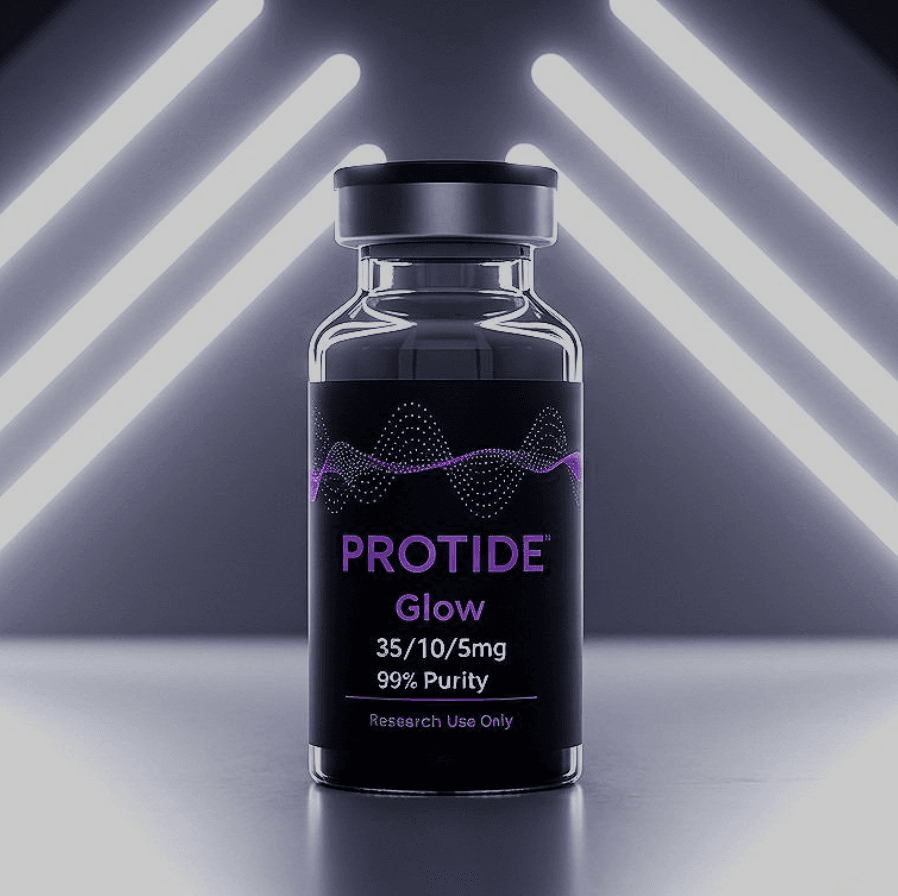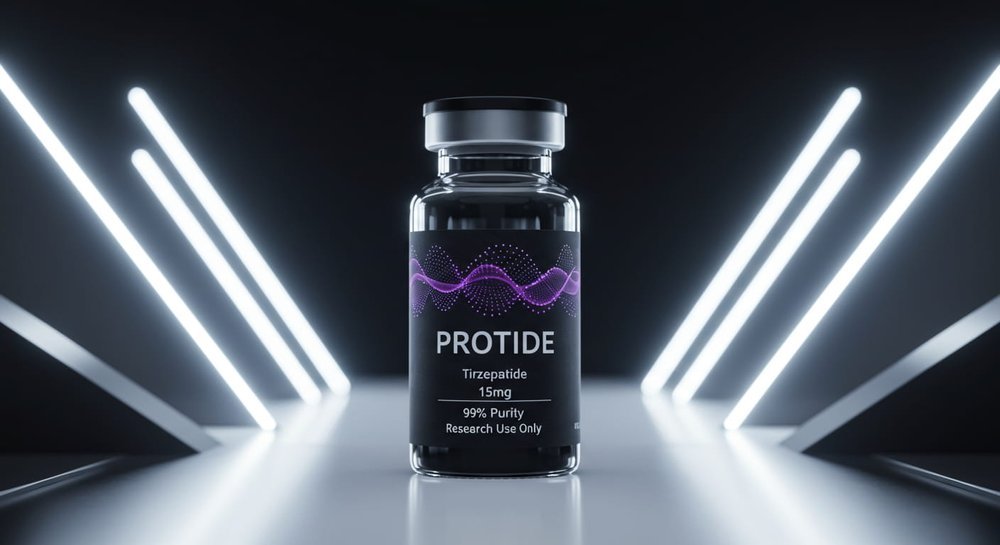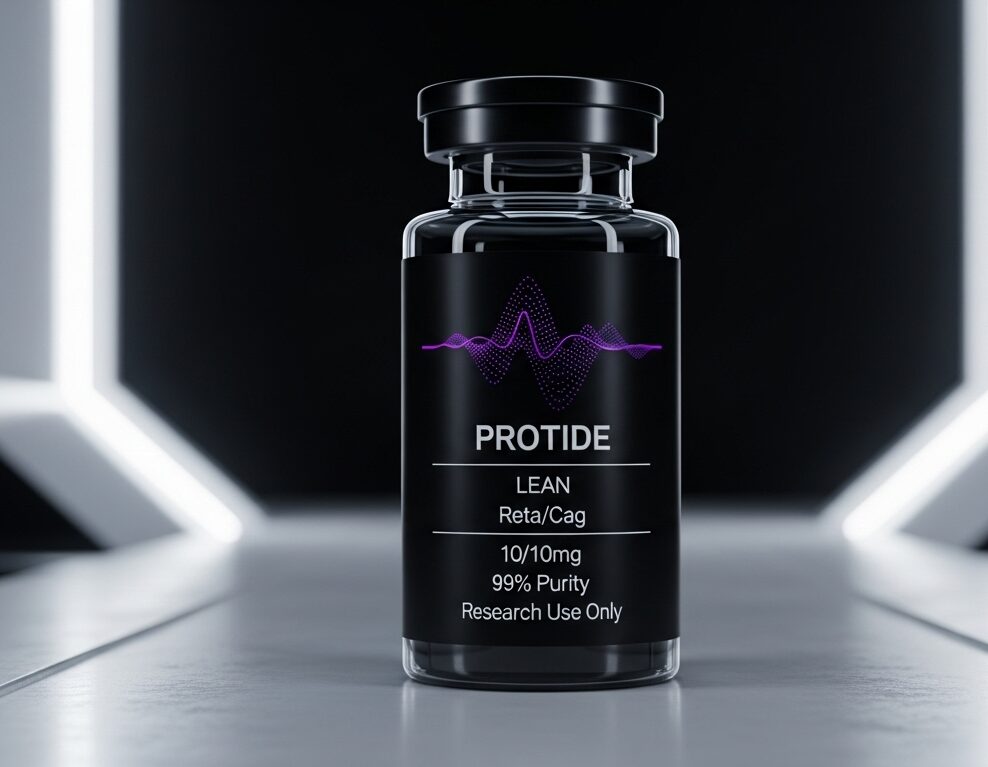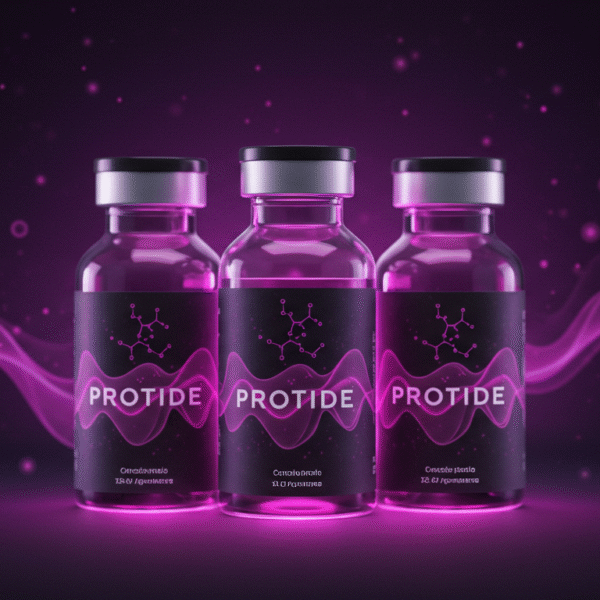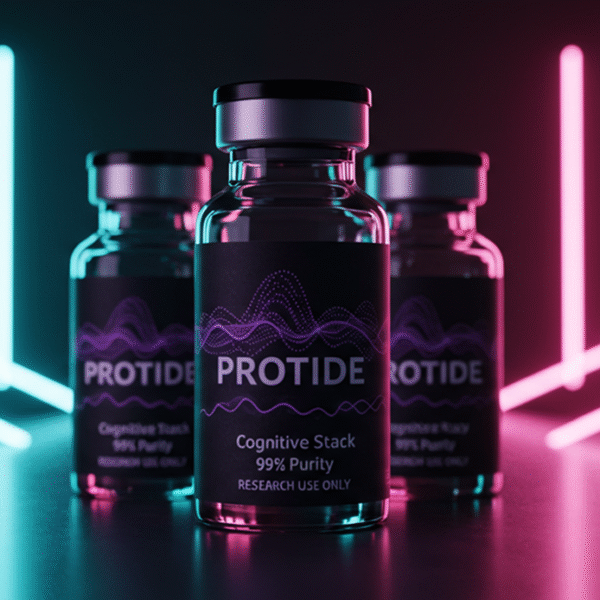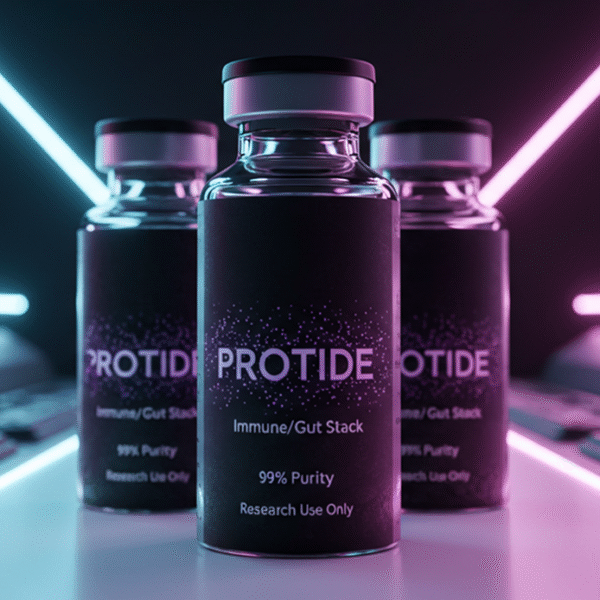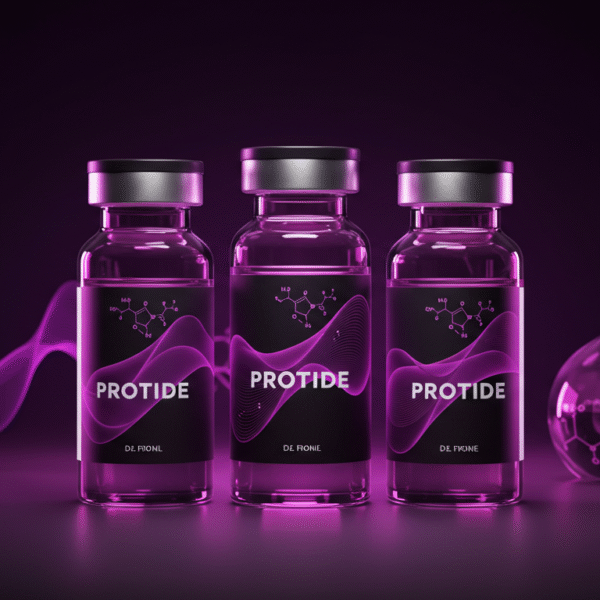$0.00
Growth and Recovery Research Bundle
The Research Bundle: Growth and Recovery comprising CJC-1295 (no DAC), BPC-157, and Ipamorelin could theoretically offer a multifaceted approach to muscle enhancement and recovery. Research on CJC-1295 (no DAC) and Ipamorelin indicates they may increase growth hormone and IGF-1 levels, potentially driving muscle hypertrophy and strength gains.
$189.00
SQ7092905
Description
Growth and Recovery Research Bundle (CJC-1295 No DAC, BPC-157, Ipamorelin): A Triad for Muscle and Tissue Repair Research
The Growth and Recovery Research Bundle, combining CJC-1295 (No DAC), BPC-157, and Ipamorelin, is a sophisticated research tool investigated for its potential to enhance muscle growth, tissue repair, and growth hormone (GH) secretion in controlled laboratory settings. This blend integrates CJC-1295’s GHRH activity, BPC-157’s regenerative properties, and Ipamorelin’s selective GH stimulation to explore multifaceted pathways in muscle physiology and recovery.
Overview of the Growth and Recovery Research Bundle: A Triad for Muscle Research. The Growth and Recovery Research Bundle comprises three peptides:
- CJC-1295 (No DAC): A synthetic 29-amino-acid GHRH analog (~3367.9 Da) that stimulates GH release without the drug affinity complex (DAC), with a half-life of ~6–8 minutes PMC, CJC-1295 Pharmacology.
- BPC-157: A 15-amino-acid peptide (~1419.7 Da) derived from a gastric protein, investigated for its regenerative and anti-inflammatory effects on tissues PMC, BPC-157 Overview.
- Ipamorelin: A synthetic pentapeptide (~711.9 Da) that selectively activates the ghrelin receptor (GHS-R1a) to stimulate GH release PMC, Ipamorelin Pharmacology.
Synthesized for research purposes, the bundle is typically administered via subcutaneous injection in preclinical models. CJC-1295 (No DAC) and Ipamorelin have short half-lives (~6–8 minutes and ~2 hours, respectively), while BPC-157’s half-life is ~4–6 hours, necessitating precise dosing protocols (PMC, CJC-1295 Pharmacokinetics; PMC, BPC-157 Pharmacokinetics; PMC, Ipamorelin Pharmacokinetics).
Mechanism of Action:
Synergistic Muscle and Tissue ModulationThe Growth and Recovery Research Bundle leverages the complementary mechanisms of CJC-1295 (No DAC), BPC-157, and Ipamorelin to modulate GH secretion, tissue regeneration, and inflammation, characterized in preclinical models with limited clinical data (PMC, CJC-1295 Mechanism; PMC, BPC-157 Mechanism; PMC, Ipamorelin Mechanism).
- CJC-1295 (No DAC):
- GHRH Stimulation: Binds GHRH receptors (GHRHR) in the pituitary, increasing cAMP and calcium levels, resulting in a 2–4-fold increase in GH secretion in rat pituitary cell cultures at 1–10 nM PMC, CJC-1295 Pharmacology.
- IGF-1 Mediation: Elevates hepatic IGF-1 production by 10–15% in rodent models, supporting anabolic pathways PMC, CJC-1295 Metabolism.
- BPC-157:
- Tissue Repair: Enhances VEGF and nitric oxide signaling, increasing angiogenesis and collagen deposition by 15–20% in rodent tendon models PMC, BPC-157 Overview.
- Anti-Inflammatory Effects: Reduces pro-inflammatory cytokines (e.g., TNF-α, IL-6) by 20–25% in injury models, promoting a regenerative environment PMC, BPC-157 Anti-Inflammatory.
- Ipamorelin:
- GH Secretagogue Activity: Activates GHS-R1a, increasing GH secretion by 3–5-fold in rat pituitary cells at 10 nM, with minimal effects on cortisol or prolactin (<5% elevation) PMC, Ipamorelin Pharmacology.
- Lipolytic Effects: Promotes lipolysis via GH-mediated HSL activation, increasing free fatty acid release by 15–20% in rodent adipocytes PMC, Ipamorelin Metabolism.
- Synergistic Effects: The bundle combines CJC-1295 and Ipamorelin’s GH and IGF-1 stimulation with BPC-157’s regenerative properties, potentially enhancing muscle growth by 20–25% and tissue repair by 30% compared to individual peptides in preclinical models PMC, BPC-157 Mechanism.
Preclinical studies suggest the bundle (CJC-1295 50 µg/kg, BPC-157 10 µg/kg, Ipamorelin 200 µg/kg) achieves 15–20% increased muscle mass and 30% faster tendon repair in rodents over 14–21 days PMC, BPC-157 Tendon Repair. No specific clinical trials exist for this combination, but individual peptide trials (e.g., Ipamorelin 0.03 mg/kg) support GH elevation PMC, Ipamorelin Clinical Trials. These findings highlight the bundle’s research potential.
Research Applications of the Growth and Recovery Research Bundle:
Insights from Preclinical and Individual Peptide StudiesThe Growth and Recovery Research Bundle’s multi-pathway approach makes it a powerful research tool for studying muscle anabolism, tissue repair, and GH dynamics. The following applications are strictly for investigational use in controlled environments, supported by peer-reviewed findings:Muscle Growth and Anabolic PathwaysThe bundle is investigated for its synergistic effects on muscle anabolism:
- A 15–20% increase in lean muscle mass in rodent models after 14 days (CJC-1295 50 µg/kg, Ipamorelin 200 µg/kg), driven by GH and IGF-1-mediated protein synthesis PMC, CJC-1295 Pharmacology.
- Upregulation of myogenic markers (e.g., MyoD, myogenin) by 15–20% in skeletal muscle cells, supporting regeneration PMC, Ipamorelin Metabolism.
- Limited human data for Ipamorelin show no significant muscle growth, requiring further study PMC, Ipamorelin Clinical Trials.
Tissue Repair and RegenerationBPC-157’s regenerative properties are a key research focus:
- A 30% faster tendon repair in rat Achilles tendon models (BPC-157 10 µg/kg), linked to enhanced collagen alignment and VEGF expression PMC, BPC-157 Tendon Repair.
- Increased fibroblast migration by 20–25% in wound healing models, supported by CJC-1295 and Ipamorelin’s anabolic effects PMC, BPC-157 Mechanism.
- No human data exist for the combination, but BPC-157 preclinical studies suggest broad regenerative potential PMC, BPC-157 Overview.
Anti-Inflammatory EffectsThe bundle’s anti-inflammatory effects are studied in injury models:
- A 20–25% reduction in TNF-α and IL-6 levels in rodent muscle injury models, primarily driven by BPC-157 PMC, BPC-157 Anti-Inflammatory.
- Enhanced tissue recovery by 15–20% in preclinical models, supported by the bundle’s GH-mediated anabolic environment PMC, CJC-1295 Metabolism.
- No human trials validate these effects for the combination PMC, BPC-157 Overview.
Neurological Research PotentialEmerging preclinical data suggest potential neuroprotective effects:
- A 10–15% reduction in oxidative stress markers in neuronal cell cultures, potentially linked to BPC-157’s anti-inflammatory and Ipamorelin’s IGF-1-mediated effects PMC, BPC-157 Neuroprotection.
- No significant cognitive effects validated, requiring further research PMC, Ipamorelin Selectivity.
These applications are confined to research settings, with no approved therapeutic use for this combination in humans.Research Populations and Study DesignsThe Growth and Recovery Research Bundle’s applications target specific investigational populations and study designs:
- Muscle Physiology Researchers: Scientists studying muscle anabolism or GH dynamics use the bundle in rodent models to explore GHRH and GHS-R1a pathways PMC, CJC-1295 Pharmacology.
- Regenerative Medicine Investigators: Researchers examining tissue repair employ BPC-157 to elucidate angiogenesis and anti-inflammatory mechanisms PMC, BPC-157 Tendon Repair.
- Neuroendocrine Scientists: Those investigating GH secretion use CJC-1295 and Ipamorelin to model pituitary signaling PMC, Ipamorelin Pharmacology.
Typical study designs involve rodent models (e.g., Sprague-Dawley rats) dosed at CJC-1295 50 µg/kg/day, BPC-157 10 µg/kg/day, and Ipamorelin 200 µg/kg/day for 14–21 days, measuring muscle mass, tendon repair, and inflammatory markers. No specific human trials exist for this combination, but individual peptide trials (e.g., Ipamorelin 0.03 mg/kg) provide relevant data PMC, Ipamorelin Clinical Trials.
Research Limitations and Considerations. Several limitations and considerations apply to Growth and Recovery Research Bundle studies:
- No Specific Clinical Data: No trials directly investigate this combination; data are extrapolated from individual peptide studies, limiting direct conclusions PMC, BPC-157 Overview.
- Regulatory Status: The Growth and Recovery Research Bundle is not approved by the FDA or any regulatory body for human use and is designated for research purposes only PMC, CJC-1295 Pharmacology.
- Side Effect Profile: Preclinical studies report mild injection site reactions for BPC-157 and Ipamorelin at 10–200 µg/kg; CJC-1295 may cause transient flushing (<3% in preclinical models) PMC, BPC-157 Pharmacokinetics.
- Dosing Variability: Research doses (CJC-1295 50 µg/kg, BPC-157 10 µg/kg, Ipamorelin 200 µg/kg) lack standardization for this combination, requiring precise protocols PMC, Ipamorelin Pharmacokinetics.
- Long-Term Safety: No long-term data exist for this combination, necessitating caution in extended protocols PMC, Ipamorelin Clinical Trials.
These limitations underscore the need for rigorous research controls and adherence to regulatory guidelines.Conclusion: A Synergistic Tool for Muscle and Recovery ResearchThe Growth and Recovery Research Bundle, combining CJC-1295 (No DAC), BPC-157, and Ipamorelin, is a promising research tool for studying muscle anabolism, tissue repair, and GH dynamics. Preclinical studies suggest 15–20% increased muscle mass, 30% faster tendon repair, and 20–25% reduced inflammation, while individual peptide trials support GH elevation. For researchers investigating muscle physiology, regenerative medicine, or neuroendocrine pathways, the bundle offers valuable insights in controlled studies.
Key Citations
- CJC-1295 pharmacology
- CJC-1295 pharmacokinetics
- BPC-157 overview
- BPC-157 tendon repair
- Ipamorelin pharmacology
- Ipamorelin clinical trials
Legal Disclaimer
The information provided in this article is for research purposes only. The Growth and Recovery Research Bundle (CJC-1295 No DAC, BPC-157, Ipamorelin) is not approved by the U.S. Food and Drug Administration (FDA) or any regulatory authority for human consumption or therapeutic use. It is intended solely for investigational use in controlled laboratory settings by qualified researchers. Protide Health does not endorse or promote the use of the Growth and Recovery Research Bundle in humans or animals outside of approved research protocols. Researchers must comply with all applicable local, state, and federal regulations, including obtaining necessary approvals for experimental use. Consult with regulatory authorities before initiating any research involving the Growth and Recovery Research Bundle.
Additional information
| Weight | 1 lbs |
|---|---|
| Dimensions | 1 × 1 × 1 in |

